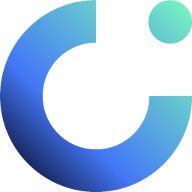This article is based on Farhan Manjiyani’s interview for the Compete Clarity podcast. Check out the conversation in its full glory here!
Back in my days as a sales development rep (SDR), competitive intelligence was definitely not part of my career plan.
However, a few serendipitous opportunities opened the door to the world of product marketing, eventually leading to a full-time competitive intelligence role at Grafana Labs.
In this post, I’ll briefly share my winding journey from SDR to product marketer to dedicated CI manager. You’ll see how I leveraged side projects and internal networking to pave my transition into new areas. I’ll also pass along some key lessons I picked up along the way.
Let’s get into it!
How to transition into a new role
I apply the same principles every time I want to take on a new role. This framework works for breaking into almost any position – product marketing, technical, non-technical – the process is largely the same:
First, put yourself in the hiring manager's shoes. They likely already have someone doing this job, but that person is trying to free up their time to focus on other priorities.
So when considering you for the role, the hiring manager wants to de-risk their investment – they don't want to trade the time they currently spend on those responsibilities for the time it will take to train you. Their goal is to find someone who can fully take over the work so they don't have to think about it anymore.
If you don't have direct experience in the specific role, the key is to start building up your portfolio ahead of time. Most hiring managers have a long list of projects and tasks they want to get to eventually, but just don't have the bandwidth for. Ask what those are, and look for opportunities to help out with items from their backlog – that’s a great way to start building your portfolio.
I followed this approach when I wanted to transition from an SDR role into product marketing. Later, when I wanted to move into competitive intelligence, I did the same thing – while staying in my product marketing role, I went to people already working in competitive intelligence and asked:
“What's a project you want to get done soon that you don't have bandwidth for? I'd like to take a stab at it and get your feedback. All I need from you is to point me in the right direction. If you have an example of something you’ve done before, that would be extremely helpful for me to understand what the final output should look like. But if not, just set me loose on the project – I can figure it out.”
How I landed in competitive intelligence
When I was an SDR, I took on some competitive analysis work, which became my first foray into product marketing. There was a competitor, a tier-three player, that kept coming up in our sales conversations. The product marketing team didn't see this competitor as a high priority, but my team kept hearing about them.
So I did a quick competitive analysis and got some feedback from the product marketing team. Then I had an opportunity to create training for my SDR peers on this competitor. Later, I kept improving the battlecard I’d built based on new objections we were hearing.
At the time, I didn't fully realize I was doing product marketing work. I viewed it more as experimentation and skill-building for my SDR role. But I realized I actually enjoyed those external responsibilities much more than my core job. That's when it clicked: I wanted to move into a product marketing role.
Similarly, once I started working in product marketing, the competitive intelligence piece was the work I had the most fun with. So when the opportunity came to double down on competitive intel full-time, I was thrilled.

What it’s like to transition into CI
In my opinion, of the three main product marketing functions – enablement, competitive intelligence, and go-to-market/messaging – CI is the easiest area to break into. That's because there’s generally more overlap with the responsibilities you’ve taken on in other roles.
For example, product marketing often has to pick up competitive analysis if there isn't a dedicated team. Product managers doing market research and talking to customers about competitors are essentially doing competitive intel as well. Technical sales and solutions engineers who come from the competition also bring key insights. So many roles end up doing some level of competitive work.
It's risky for salespeople to change their messaging – that directly impacts their livelihood every quarter. They’re incentivized to stick to what has worked before.
And then there are the skills you need for CI – running a program and scaling it company-wide, building processes to consistently acquire and organize competitive information, creating networks to gain intel, and taking an iterative and experimental approach to improve over time. Those are all skills that can be taught.
In contrast, crafting positioning and messaging is a skill that unfortunately requires a lot of refinement. My experience writing emails as an SDR didn’t directly translate into writing effective landing pages as a PMM, for example.
How my PMM experience shapes my CI work
My past pricing and enablement responsibilities as a product marketer heavily influence how I approach competitive intelligence work now as a dedicated CI lead.
I took inspiration from our pricing lead on prioritizing how I spend my time. Compared to many other CI professionals I meet, my time breakdown is very different – the majority, 60% or more, goes to deal strategy and direct sales enablement. I'm often in the field training teams on our differentiation, or talking directly with customers to pressure test and defend our value propositions.
Our pricing lead taught me that you can spend all day working on pricing models, but if you can't confidently defend that pricing to an actual customer, you shouldn't expect the rest of the company to rally behind it either.
I apply the same principle to competitive intelligence. Before putting anything out in collateral or doing any sort of enablement, I make sure I've had 10 or so real customer conversations to sanity-check the messaging. That way, not only do I get critical feedback from the source on what resonates or what needs adjustment, but I also build credibility.
Now my entire enablement approach revolves around recapping field conversations: "Hey, here are 5 calls where we tried out this new talk track and battlecard. These are the reactions we got. Here's what worked and what didn't. So here are a few tweaks I recommend as we continue rolling this out."
CI surprises
When I moved from more general product marketing to competitive intel, the biggest surprise was realizing how much is in our control.
As a product marketer, when performance lagged, we'd have these long hypothetical conversations about all the complex external factors that were impacting our performance. But often the problem isn’t external at all. It's not that the competitor has some bulletproof talk track that makes everyone magically convert.
In reality, it often comes down to consistency. For example, even if you feel confident about your differentiation in the market, can 10 people across departments actually articulate it the same way? In my experience, maybe only one or two can. When I first joined Grafana Labs and talked to product managers, I got different takes on our differentiation based on their specific product lens.
It makes sense in hindsight – product managers and marketers live in the world of their own product. They don't always connect the dots on the full customer workflow across offerings the way a competitive intelligence pro needs to. That fragmentation means you end up with diluted, inconsistent messaging that is harder to land.

Where the friction actually lies
Often the friction actually lies between products – it's the small disconnects in how we tell our platform story that make us less effective against the competition.
Early on, I think I over-indexed on the competition being this huge, scary external force that could crush us if we didn't watch their every move. In reality, it comes back to focusing on what you actually control:
- How quickly can you educate new hires on your methodology and approach?
- How easy is it for customer-facing teams to find key enablement materials on competitors after the fact?
- How much space is there to practice new talk tracks live?
Those cringe-worthy customer calls you listen to on Gong are often from someone trying to adopt a new talk track. Before you go and judge them, ask yourself: where could they have safely practiced this instead?
It's risky for salespeople to change their messaging – that directly impacts their livelihood every quarter. They’re incentivized to stick to what has worked before. We have to appreciate that dynamic and meet reps where they are with the proper training and tools to take on new plays comfortably.
Key takeaways
If you’re feeling inspired to explore internal opportunities at your organization, keep these top takeaways in mind:
🧠 Put yourself in the hiring manager’s shoes.
✏️ Identify related side projects to build your target portfolio.
🤝 Proactively network and offer help where you can.
💪🏽 Focus on consistent execution of the fundamentals.
👣 Don’t be afraid to pave your own path over time.
What’s an area that intrigues you outside your formal scope? Use the strategies we covered to start expanding your skill set there. Who knows, an exciting new opportunity could be just around the corner!
Put yourself in first place 🥇
Differentiation is critical. In today's job market, interview processes have four, five or even more stages. Competition is fierce, and proving your worth is getting harder.
How valuable would it be to you to be able to bypass all that in the eyes of the recruiter, because they’re already familiar with your work?
We're offering you the means to do just that.
We’ll work with you to quickly adapt your work into SEO-optimized articles, ghostwritten guides, and podcast episodes.
It’s never been easier to differentiate yourself, so why not start today?
Sound interesting? Send us a message at contribute@competitiveintelligencealliance.io to discuss next steps. 🤝






.png?v=4917c1c27c)